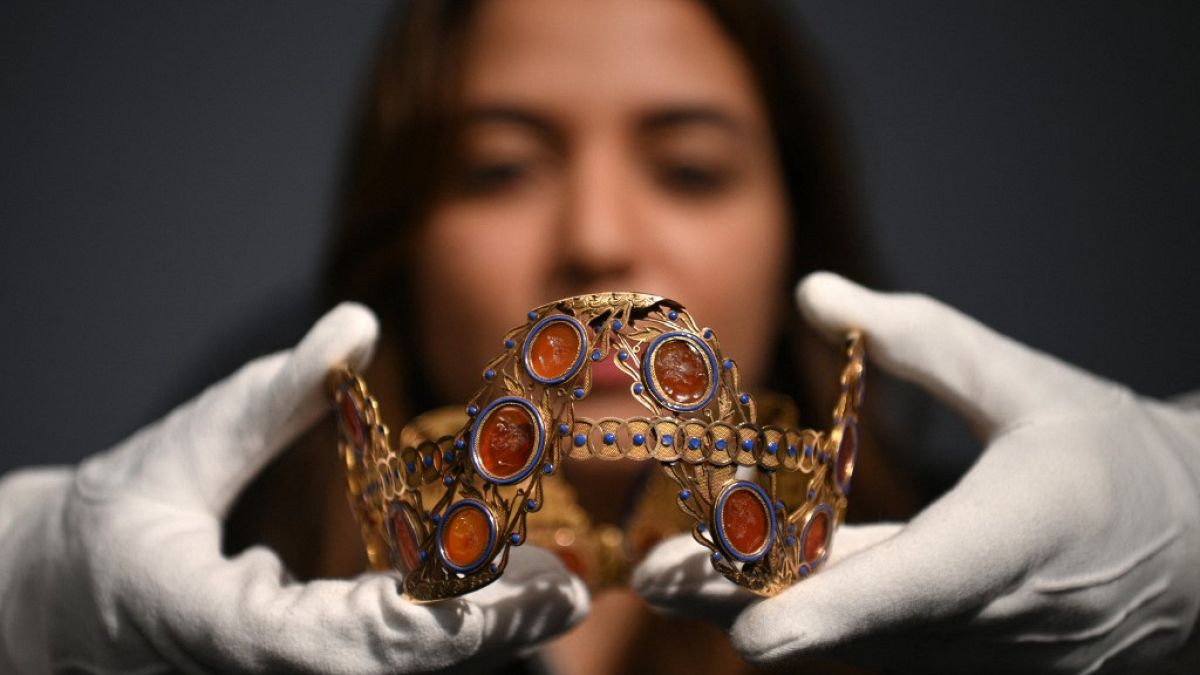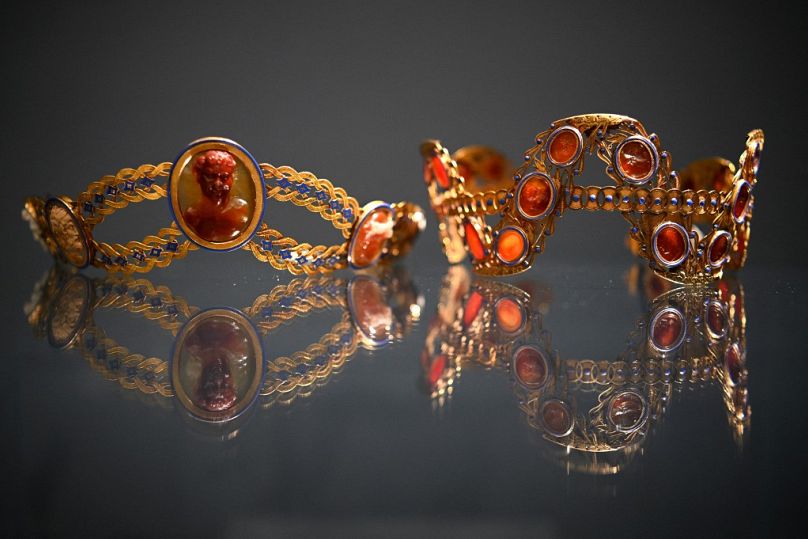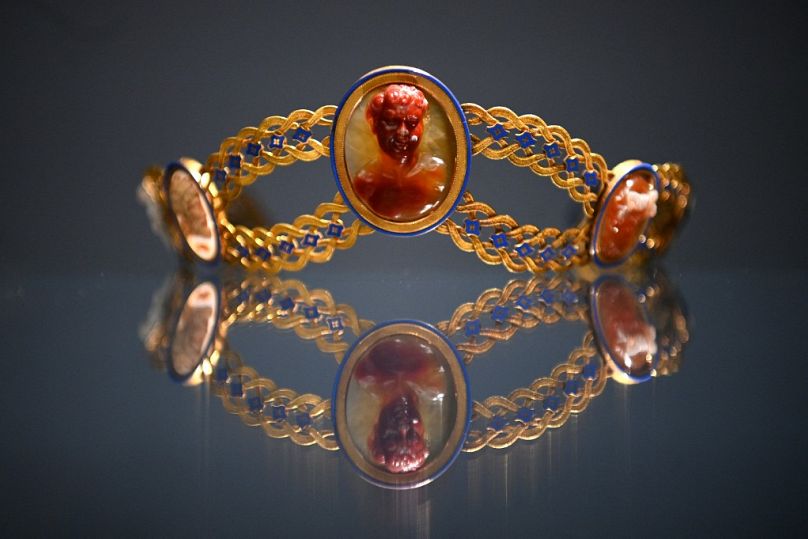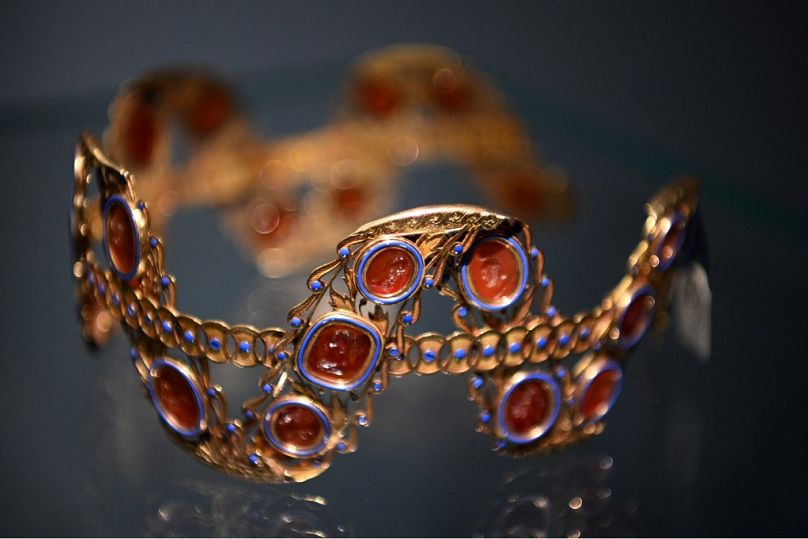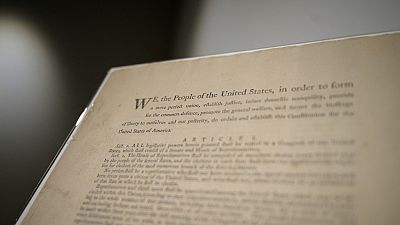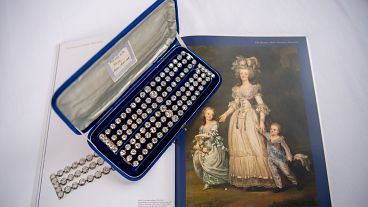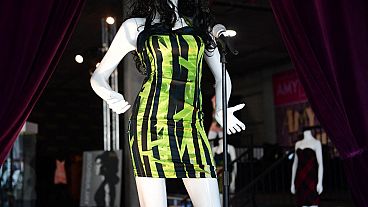Both headpieces are set with gemstones engraved with classical heads, several of which are possibly dating back to the Roman era, as early as 100 BC, and were designed to be worn together.
Two "highly rare", jewel-encrusted tiaras believed to have once belonged to the French Empress Josephine Bonaparte, wife of Napoleon Bonaparte, sold for almost €710,000 on Tuesday at a Sotheby’s auction in London.
The two tiaras, offered from a private British collection dating back at least 150 years, are thought to have been given to Josephine by Napoleon's sister Caroline early in the 19th century, according to Sotheby's.
Both headpieces are set with gemstones engraved with classical heads, several of which are possibly dating back to the Roman era, as early as 100 BC, and were designed to be worn together.
The more ornate of the duo – comprising carnelian, enamel, and gold – fetched a generous £450,600 (€526,496), while the other sold for £126,000 (€147,222), as part of a "Treasures" sale of various valuable and rare items.
"These majestic jewels mounted with cameos and intaglios are of the finest quality, we believe they were made by a jeweller in about 1805. Their style is very evocative of the neoclassical era. They certainly evoke the style of the grand Empress Josephine, her rank as the wife of Napoleon Bonaparte, her impeccable taste, and her interest in the classical world," said Kristian Spofforth, of Sotheby's.
"The jewels offered here demonstrate the finest delicate work by the finest French workshops, and, today, there are hardly any comparable pieces in the world. When fashions changed, jewellery was broken up and re-modelled, making their survival a truly exceptional one," he went on.
Josephine Bonaparte was probably given just the engraved gems, which Sotheby's said were a possible combination of Roman examples dating back to as early as 100 BC, as well as more contemporary Italian engravings.
The auctioneers believe Josephine was likely given just the engraved gems, and the jewels were then mounted for her in the French capital in around 1808 in the neo-classical style, citing marks on the crowns pointing to Paris and its famed goldsmiths of the age.
They were believed to endow the wearer with their various depicted qualities such as heroism, faithfulness, and love, all while blazing a trail in the fashion world of the day.
"By being the first to incorporate these cameos and intaglios into her dress, wearing them side by side with pearls and diamonds, she created an entirely new fashion that swept Paris and the world, based on neo-classical forms," explained Spofforth.
No details were immediately released Tuesday on the identity of the buyers.
Sotheby's said the tiaras were possibly acquired from Josephine or her estate by British landowner, art collector, and politician Edward Lascelles, and then passed on to his descendants.
